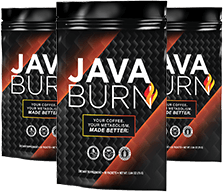We’re dwelling in the golden age of running—you may attempt HYROX, native run golf equipment, high-tech footwear, and all the gear you possibly can ever need. But whether or not you’re jogging round the block or training for your tenth marathon, one factor stays essential: correct running approach. And at the core of excellent kind is one usually ignored issue—your running cadence.
Cadence may sound easy (it’s simply steps per minute, proper?), however there are many myths and misconceptions that may journey up even seasoned runners. Below, we break down every thing you should learn about this elementary facet of running mechanics—why it issues, easy methods to fine-tune it, and the way it will help you keep away from damage, run extra effectively, and perhaps even shave a while off your subsequent 5K.
Want the newest fitness recommendation and workouts to sort out any journey? Sign up for our Blueprint e-newsletter.
What Is Running Cadence?
Strictly talking, running cadence is the variety of steps you’re taking per minute (SPM). But greater than that, it’s “a measurement that reflects how frequently you contact the ground,” says Mario Castellanos, a running coach primarily based in Spain. For that purpose, it’s a important element of your total running efficiency.
Why You Should Focus on Your Running Cadence
When it involves assessing your kind, cadence is one among the key metrics, says Castellanos. “Improving your cadence can help you to run more efficiently, optimize your economy of motion, and reduce the risk of injuries,” he provides.
In normal, he says, a better cadence is related to much less contact time with the floor. That is smart since you’re taking extra steps per minute, so each lasts for a shorter period of time and subsequently produces much less impression in your body. It can even enhance your total pace as a result of each time your foot hits the floor, it propels you ahead.
That being mentioned, you don’t essentially need the highest SPM potential.
Related: These Are the Best Pre-Workout Snacks to Fuel Your Training, According to a Sports Nutrition Coach
How to Measure Your Running Cadence
Most running apps and sensible watches (like Garmin or Apple) mechanically measure your running cadence. However, if you wish to do it manually, the course of is straightforward: Find a comparatively straight, flat patch of floor, time your self for 30 seconds, rely the variety of steps you’re taking, and then multiply that quantity by two. If you need an much more correct SPM, time your self for the whole minute.
Castellanos recommends measuring your SPM at a light-weight tempo and additionally at your competitors tempo. If you need much more perception into your gait, you can even measure the cadence of your stroll, jog, and dash. All of those metrics could show you how to as you contemplate modifying your cadence.
Is There An Ideal Running Cadence?
Since the 80s, typical knowledge has mentioned that 180 SPM is the preferrred running cadence. This thought relies on a examine of runners from the 1984 Olympic Games, however newer research have proven that some elite runners have an SPM as little as 155 or as high as 203.
That variability is smart for numerous causes. For one, a better SPM could lead to much less impression in your joints, nevertheless it additionally has a downside, says Castellanos. An extended stride covers extra floor, nevertheless it additionally requires extra vitality, which means you’ll find yourself feeling extra fatigued. Secondly, numerous elements affect running cadence, together with peak, weight, stride size, pace, fatigue, and even the footwear you’re carrying.
Castellanos agrees that there’s no preferrred SPM however gives a tough information as a degree of reference: “Many studies have found that, for long-distance runners, between 170 and 190 steps per minute is usually what’s efficient,” he says. “That being said, what’s most important is finding a range that’s natural for you and that allows you to run comfortably and efficiently.”
Related: This German Strength Training Method Is 2X More Effective for Muscle Growth
How to Increase Your Running Cadence
Generally, runners with much less expertise are nearer to the floor whereas they run and spend extra time in touch with the running floor, which suggests they’ve a decrease SPM.
If you need to work to extend your cadence, Castellanos recommends doing so step by step, with a 5 to 10 p.c enhance to start with. To hit the proper rhythm, he advises utilizing a metronome or music at the goal tempo. For instance, if you wish to hit an SPM of 180, you may run to music with a BPM of 180 (there are many playlists on websites like YouTube and Spotify.
To actually really feel that new tempo in your body, you may run in place for a minute or two earlier than beginning your run in earnest. Then, incorporate the following drills into your warm-up or cool-down:
1. Fast Feet — 3 sets of 15 seconds
Stand tall and run in place with very quick, small steps—aiming for pace, not peak. The aim is mild, fast foot contact.
2. A-Skips — 2 sets of 20 meters
Skip ahead with high knees and rhythmic arm swings. The aim is a fast foot strike and a strong knee drive.
3. Butt Kicks — 2 sets of 20 meters
Kick your heels towards your glutes as you run ahead. The aim is fast foot turnover.
4. Strides — 60-100 meters
Gradually speed up to ~90% of max effort. The aim here’s a clean, quick cadence underneath mild fatigue.
Then, as you’re cruising round the observe, the trails, or the HYROX course, take into consideration your stride changing into faster however not essentially shorter. The aim, in any case, is to keep in touch with the floor for much less time total. If you’re actually struggling to get the increased SPM, additionally contemplate running up a hill, which can naturally power you into a better cadence.
Increasing your cadence will possible really feel uncomfortable at first, which is why you need to start drilling the new approach effectively forward of your subsequent race. But when you can adapt to the new rhythm, the potential advantages are big: You’ll possible not solely decrease your danger of accidents, but additionally rating a quicker race time total.
Related: How to Do Hanging Leg Raises for Rock-Solid Abs



















Discussion about this post